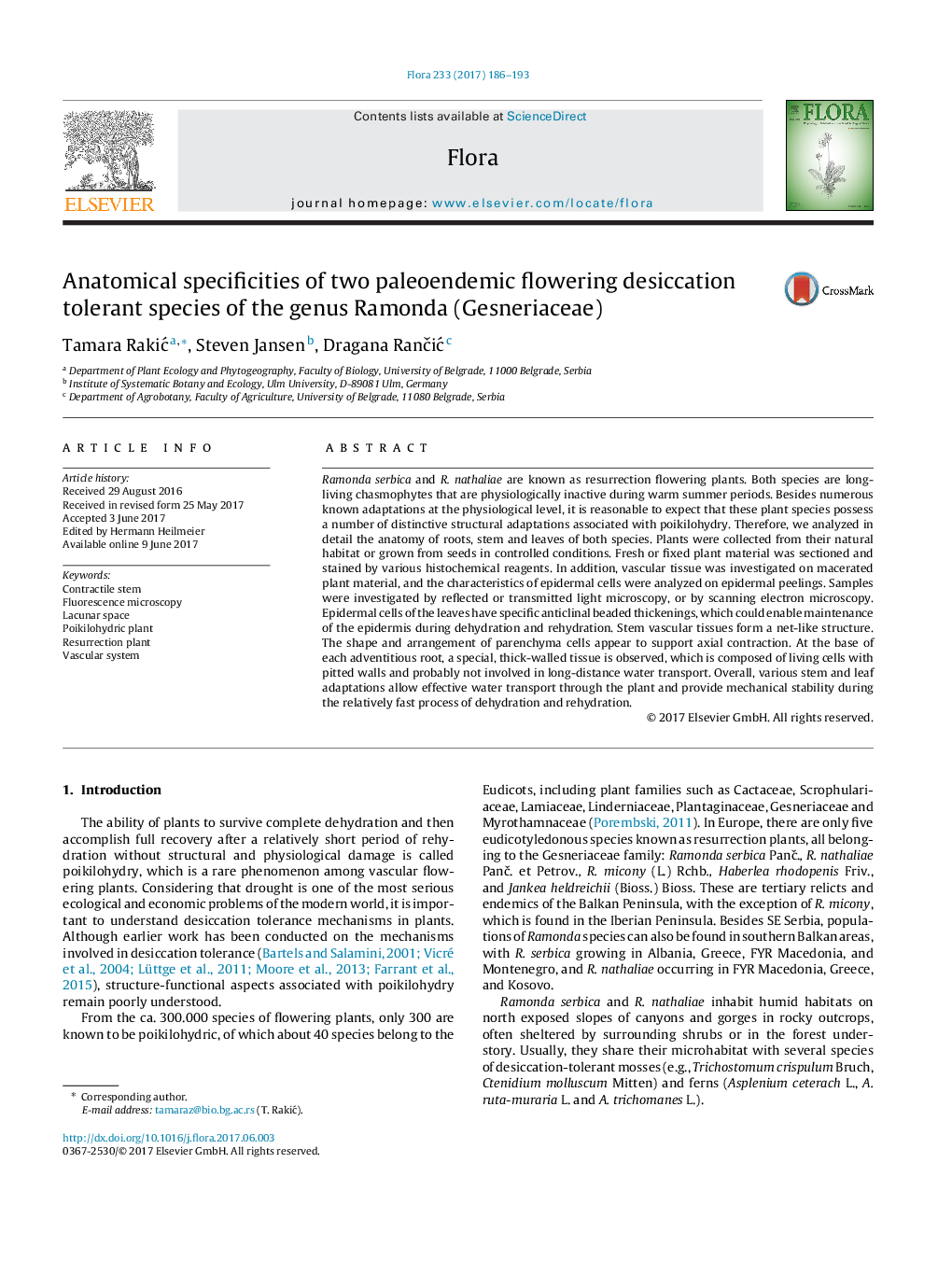| کد مقاله | کد نشریه | سال انتشار | مقاله انگلیسی | نسخه تمام متن |
|---|---|---|---|---|
| 5532414 | 1549926 | 2017 | 8 صفحه PDF | دانلود رایگان |

- Sinuously folded axial vascular bundles indicate longitudinal compression of the stem.
- Specific organization of vascular tissues contributes to efficient water transport.
- The role of specific 'vascular sclerenchyma' in the stem for now remains unclear.
Ramonda serbica and R. nathaliae are known as resurrection flowering plants. Both species are long-living chasmophytes that are physiologically inactive during warm summer periods. Besides numerous known adaptations at the physiological level, it is reasonable to expect that these plant species possess a number of distinctive structural adaptations associated with poikilohydry. Therefore, we analyzed in detail the anatomy of roots, stem and leaves of both species. Plants were collected from their natural habitat or grown from seeds in controlled conditions. Fresh or fixed plant material was sectioned and stained by various histochemical reagents. In addition, vascular tissue was investigated on macerated plant material, and the characteristics of epidermal cells were analyzed on epidermal peelings. Samples were investigated by reflected or transmitted light microscopy, or by scanning electron microscopy. Epidermal cells of the leaves have specific anticlinal beaded thickenings, which could enable maintenance of the epidermis during dehydration and rehydration. Stem vascular tissues form a net-like structure. The shape and arrangement of parenchyma cells appear to support axial contraction. At the base of each adventitious root, a special, thick-walled tissue is observed, which is composed of living cells with pitted walls and probably not involved in long-distance water transport. Overall, various stem and leaf adaptations allow effective water transport through the plant and provide mechanical stability during the relatively fast process of dehydration and rehydration.
Journal: Flora - Volume 233, August 2017, Pages 186-193